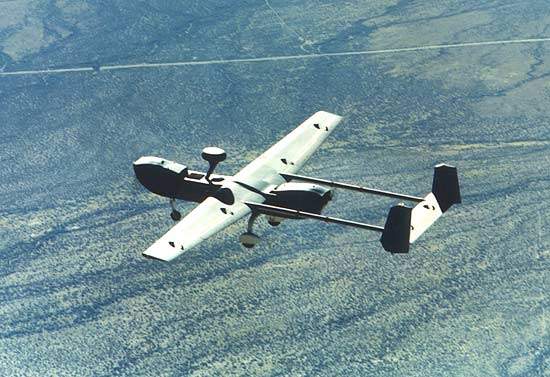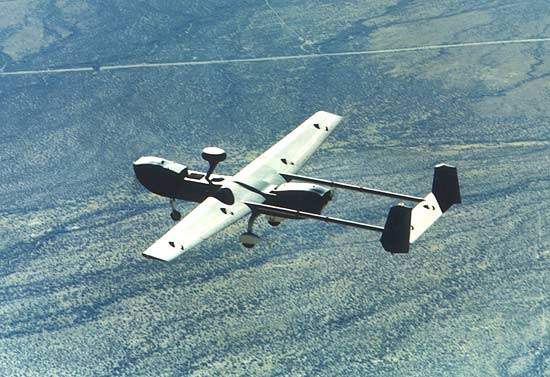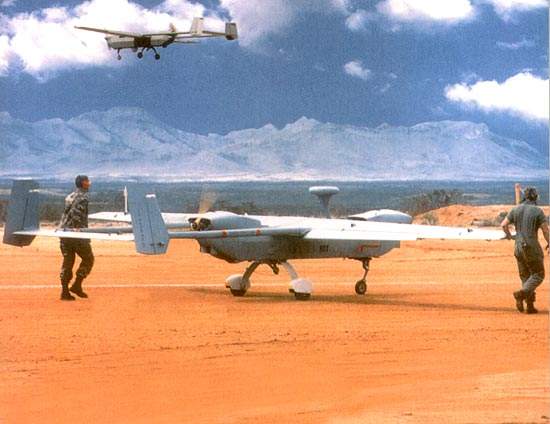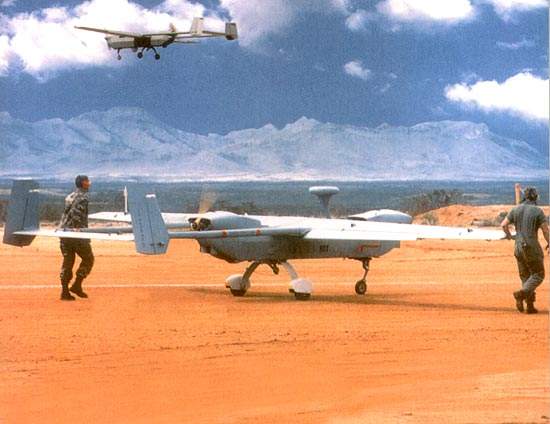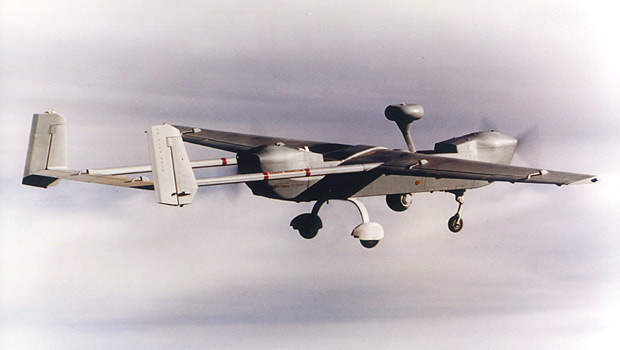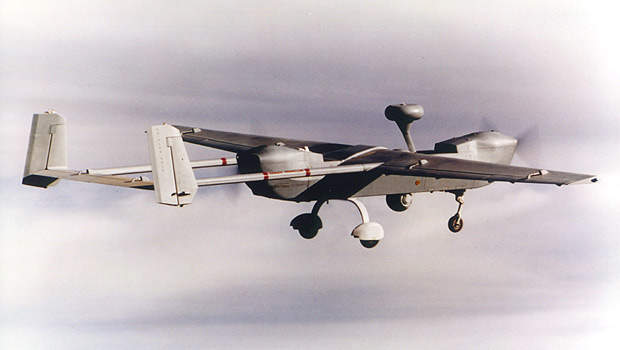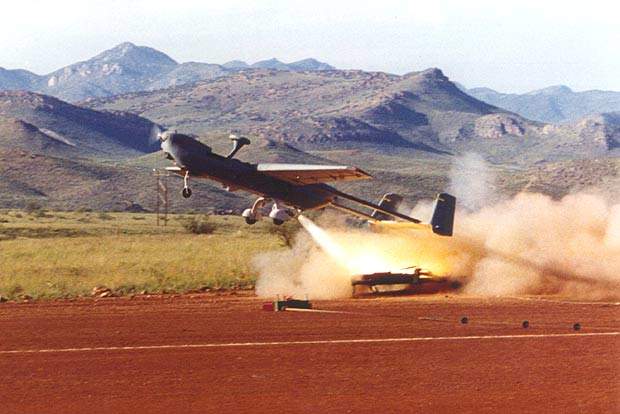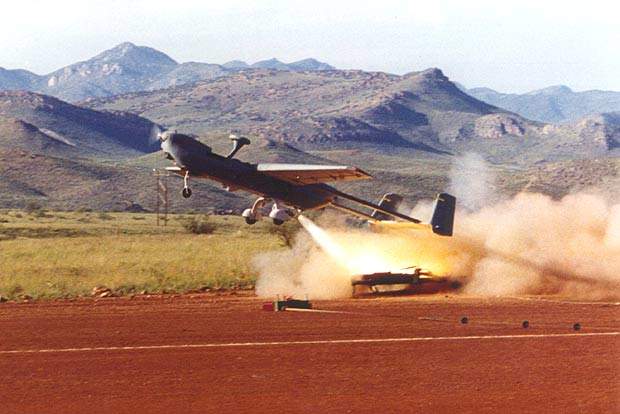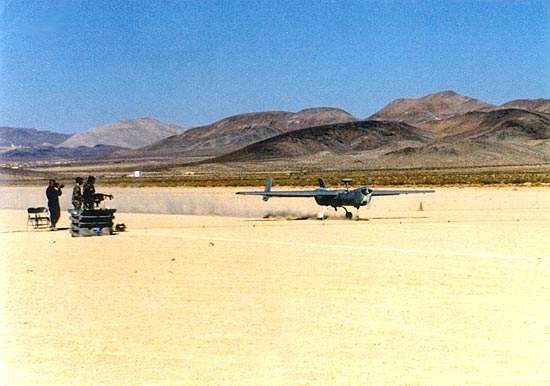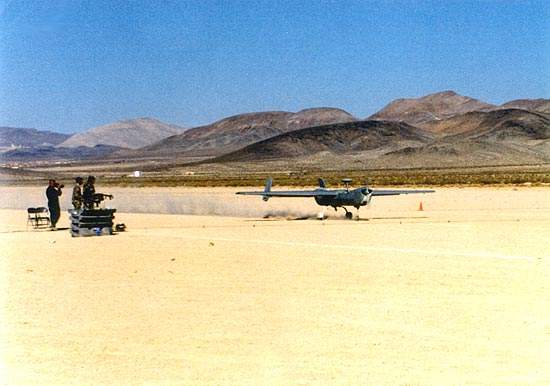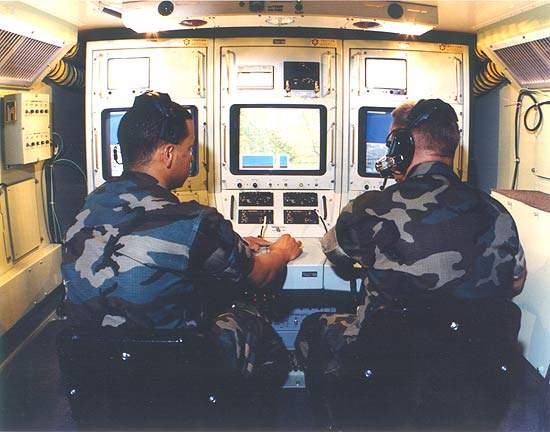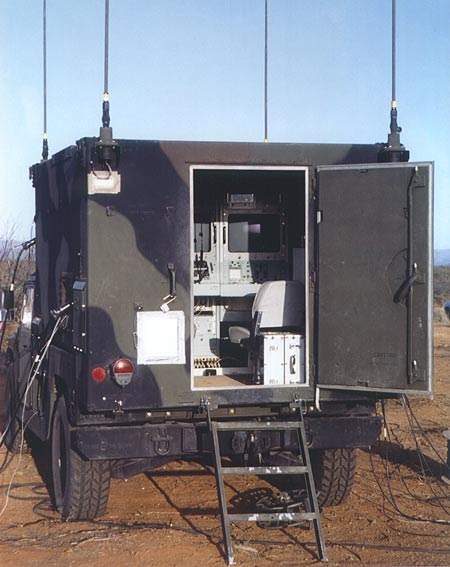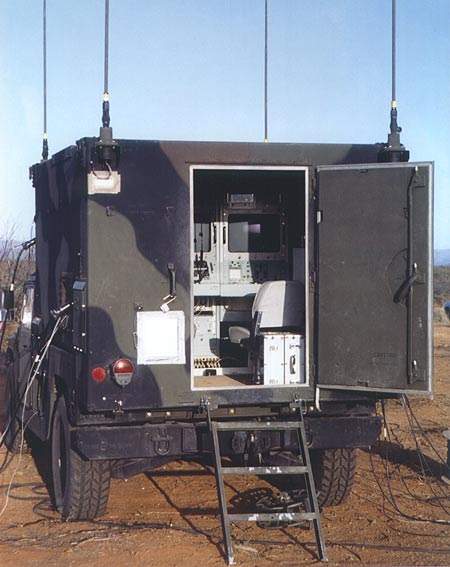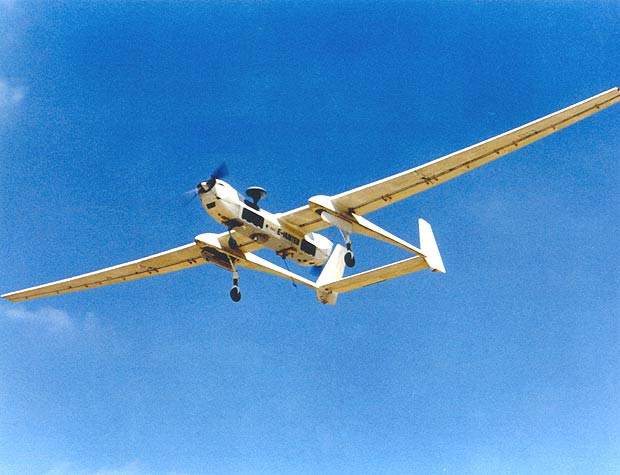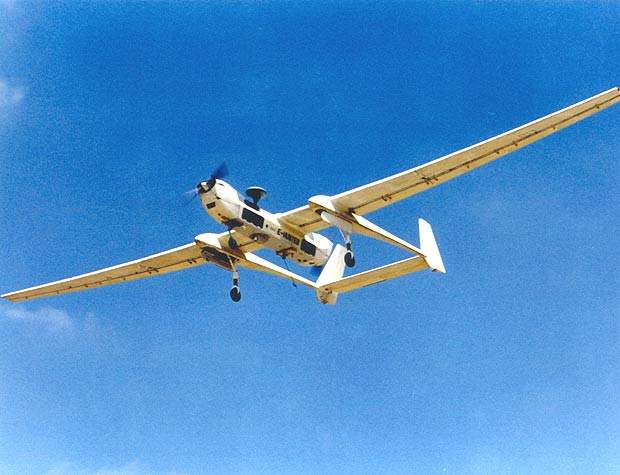Hunter is a joint tactical unmanned aerial system in service with the US Army. In 1989, the US Army, Navy and Marines initiated a joint unmanned aerial vehicle programme. TRW (now Northrop Grumman) and Israeli Aircraft Industries (IAI) Malat Division won a low-rate initial production (LRIP) contract in 1993 to supply seven Hunter systems. The systems entered service in 1996. Hunter has also been sold to France and Belgium.
The Hunter system is capable of carrying out the following missions: real-time imagery intelligence, artillery adjustment, battle damage assessment, reconnaissance and surveillance, target acquisition and battlefield observation.
RQ-5A Hunter UAV
The RQ-5A Hunter air vehicle is a fixed-wing, twin-tail boom aircraft with a dual rudder. It is propelled by two Moto-Guzzi petrol engines, each developing 60hp.
The air vehicle can be launched from a paved or semi-paved runway or it can use a rocket assisted (RATO) system, where it is launched from a zero-length launcher using a rocket booster. The RATO launch is useful on board small ships and in areas where space is limited.
The air vehicle can land on a regular runway, grassy strip or highway using arresting cables.
The B-Hunter, produced by IAI for Belgium, has an automatic landing and take-off (ATLND) system. The ATLND is based on a laser tracker sensor that is used to automatically guide the air vehicle to a flare point.
MQ-5B/C Hunter unmanned aerial vehicle
The MQ-5B has the same fixed-wing, twin tail-boom design but with a fuel-carrying centre wing lengthened to 10.44m (34.25ft). It is powered by two ‘heavy fuel’ diesel engines developed by Northrop Grumman, one to ‘push’ and one to ‘pull’ the air vehicle. These allow the air vehicle to operate at higher altitudes of 6,100m (20,000ft) and increase endurance from 12 hours to 15 hours.
The new avionics suite includes upgraded mission computers, a new LN-251 global positioning system / inertial navigation system (GPS/INS), an APX-118 IFF transponder and an auxiliary power distribution unit. The suite introduces a relay mode that allows one Hunter to control another at extended ranges or over terrain obstacles.
The extended centre wing has two external hard points capable of carrying weapons such as the Northrop Grumman Viper Strike laser-guided munition. The external payload is 60kg (130lb) on each wing.
First flight of the MQ-5B was in August 2005. In February 2006, flight tests confirmed the MQ-5B’s endurance at more than 21 hours, nine hours more than the RQ-5A. The MQ-5B is fielded by the US Army in Iraq and Afghanistan and it has been reported that, in September 2007, the US Army used an MQ-B Hunter deployed in Iraq to drop a laser-guide bomb on a target – the first US Army use of an armed UAV.
In November 2008, The US Army purchased an additional 12 MQ-5B Hunter air vehicles with six Block II ground control stations and eight tactical common data link systems.
MQ-5C Extended Hunter (E-Hunter) UAV
MQ-5C Extended Hunter (E-Hunter), a larger version of Hunter, has been developed for longer endurance and higher-altitude (up to 20,000ft) tactical missions. the first flight was in April 2005. E-Hunter has a new tail assembly, and a longer centre wing which extends mission endurance to 30 hours.
In October 2002, a series of flight tests demonstrated Hunter’s ability to carry and deploy the Northrop Grumman BAT (brilliant anti-tank) submunition. The BAT submunitions destroyed a BMP combat vehicle and incapacitated a moving T-72 tank. In August 2003, Hunter successfully deployed a derivative of the BAT, the Viper Strike precision munition with semi-active laser seeker instead of infrared and acoustic sensors and 1.8kg (4lb) warhead.
Hunter payloads
The primary payload on the RQ-5A is the multi-mission optronic payload (MOSP), developed by IAI Tamam, which includes television and forward-looking infrared (FLIR) to provide day / night surveillance capability. US Army Hunters operating in Macedonia are being fitted with new sensors including a third-generation FLIR and a spotter for the day TV camera.
Hunter is capable of carrying other advanced mission payloads and has been used as a payload demonstration platform. Payloads have included a laser designator and various communications systems. A communications relay payload extends VHF/UHF communications beyond line of sight. Electronic countermeasures payloads have included communications warning receiver, communications jammer and radar jammer supplied by Northrop Grumman.
In June 2003, Northrop Grumman tested a Hunter UAV equipped with a SAR/MTI (synthetic aperture radar / moving target indicator) payload.
Ground control station
The GCS-3000 ground control station, manned by two operators, tracks, commands, controls and communicates with the air vehicle and its payload. One ground control station can control one air vehicle or two air vehicles in relay. An enhanced mission planner provides flexible automated tactical mission planning and access to digital terrain elevation data (DTED), CD ROM map data and data from the Defense Mapping Agency (DMA).
E-Hunter has been developed for longer endurance and higher-altitude missions.”
The GCS has three control bays and an optional intelligence bay. The pilot control bay controls the flight of the air vehicle. An observer control bay controls the payload functions. The navigation control bay is equipped with a digital map display which traces the flight path and monitors the progress of the mission. The intelligence bay provides data processing and distribution capabilities.
The communications uplink channels (UPL-1 and UPL-2) and the downlink channel (DNL) use fixed coded frame format.
An optional spread spectrum modem on the main uplink channel provides anti-jam capability.
IAI Malat has developed a compact ground control system (CGCS) which can be adapted for airborne, small ship and forward tactical deployment.
Remote video terminal
A remote video terminal is used at tactical operations centres to receive and display real-time video and telemetry from the airborne vehicle. The RVT is connected to a directional antenna to receive signals from the air vehicle flying up to a range of 40km from the terminal. The RVT can alternatively be connected directly to the ground control station.
Hunter UAV operational deployments
Since 1999, Hunters have been deployed in Macedonia, in support of NATO forces in Kosovo. In the first three months of Operation Allied Force, Hunters flew over 600 flight hours per 30-day period, providing imagery and real-time data. The Hunters operated in relay with two air vehicles airborne simultaneously for each mission.
Since March 2003, Hunter UAVs, deployed in support of Operation Iraqi Freedom, have flown more than 600 reconnaissance, surveillance and target acquisition missions. From November 2004, two US Army Hunter UAVs have been used for border patrol in Arizona by the US Department of Homeland Security. B-Hunter UAVs were deployed by Belgium in July 2006, in support of the European Union Force (EUFOR) in the Congo. An accident in October 2006 has led to the suspension of B-Hunter operations by Belgium.

